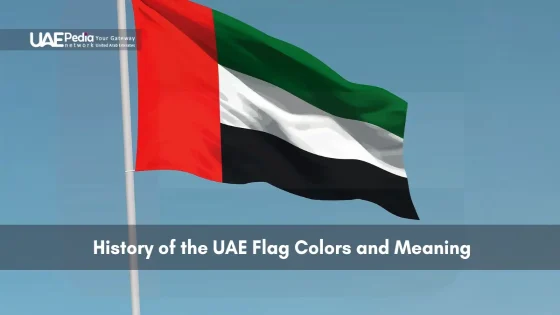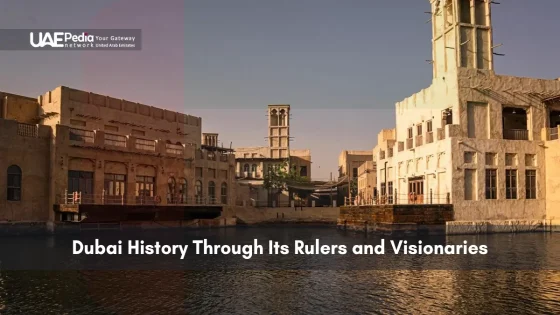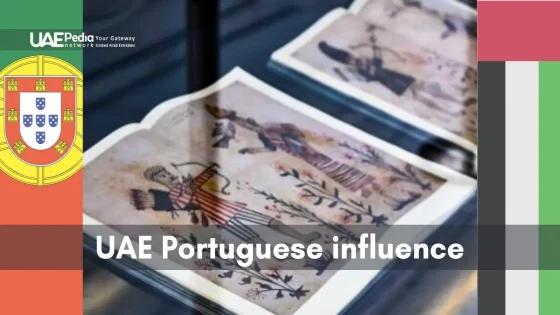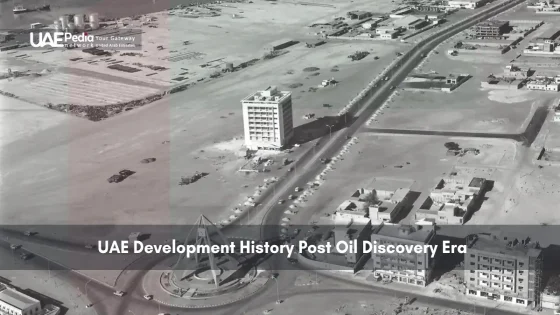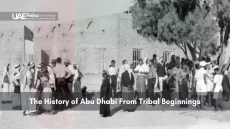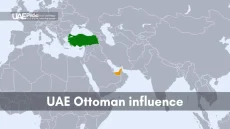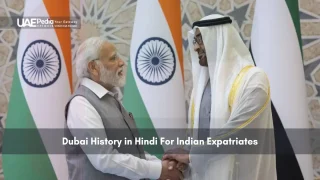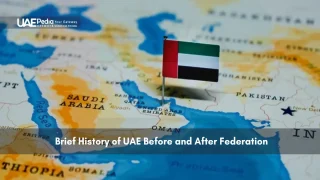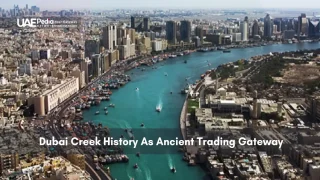When Abdullah Mohammed Al Maainah sketched his winning design in 1971, few guessed a teenager’s concept would become the rallying symbol for seven newly united emirates. Yet here we are – that bold tricolor with a vertical red stripe now waves from desert dunes to gleaming skyscrapers, whispering tales of ambition.
More than fabric, this banner stitches together heritage and hope. Its green whispers of fertile oases, white echoes desert peace, black honors oil’s transformative power, and red thrums with ancestral courage. Together, they mirror the Pan-Arab ideals that shaped the region – but with an Emirati twist.
You’ll discover how these hues became shorthand for a nation’s soul. We’ll unpack why December 2nd isn’t just a date but a chromatic revolution. And yes, we’ll settle whether that vertical bar leans left or right (spoiler: it’s deliberate).
In this section:
- The hidden meanings behind each stripe’s placement
- How a young designer’s contest entry beat 1,030 rivals
- Why this emblem unites Bedouin traditions with futuristic dreams
Origins and the Trucial States Legacy
Picture this: 19th-century dhows sailing the Gulf under plain red banners – simple, fierce, and unmistakably Arab. Long before unification, these waters buzzed with pearl divers and traders whose Trucial States era flags told stories of tribal pride and foreign influence.
The Impact of the 1820 General Treaty
British diplomats changed the game in 1820. Their treaty with coastal sheikhdoms added white borders to those crimson sails – like a peace ribbon stitched onto battle armor.
“The white signifies truce,” wrote a British envoy, “but the red remains their beating heart.”
This wasn’t just politics. Sailors began painting white rectangles on their ships’ red flags – Abu Dhabi’s version even added a black square, foreshadowing today’s Pan-Arab palette.
Early Tribal Symbols and Maritime Flags
Each emirate tweaked its banner like a family crest. Dubai’s flag sometimes bore a white star, while Ajman’s showed a dagger. Check how these evolved:
| Emirate | Pre-1820 Design | Post-1820 Design |
|---|---|---|
| Abu Dhabi | Plain red | Red with white border + black rectangle |
| Dubai | Red with tribal markings | Red/white stripes + star |
| Ajman | Solid crimson | Red/white border + dagger symbol |
By 1900, these hybrid flags flew over forts and ports. British pressure standardized sizes, but local rulers kept sneaking in personal touches – a practice that’d later inspire the UAE’s unified yet diverse identity.
Funny how those treaty-enforced borders became badges of honor. Today’s national flag doesn’t just wave unity – it winks at centuries of clever adaptation.
Evolution of the “history of the uae flag”
Imagine a college student’s doodle becoming a national emblem overnight. That’s exactly what happened when 19-year-old Abdullah Mohammad Al Maainah spotted a newspaper ad in December 1971. The newly formed seven emirates needed a banner – fast.
Designer Abdullah Mohammad Al Maainah’s Journey
Al Maainah sketched his concept between classes, blending Pan-Arab colors with a bold vertical stripe. “I wanted something that felt both timeless and urgent,” he later recalled. His design beat 1,030 entries – but he only discovered he’d won when the flag united arab states hoisted it on unification day.
The 1971 Nationwide Flag Design Contest
The contest wasn’t just about aesthetics. Judges sought symbols bridging Bedouin roots with modern ambitions. Al Maainah’s star-free design achieved this – the red stripe honoring ancestral courage, while the white space whispered of peace through unity.
Here’s what made December 1971 pivotal:
- Six-week deadline for submissions
- Anonymous judging to prevent bias
- Final selection coinciding with UAE’s formal independence
Today, that teenage designer’s work flies on 25,000 government buildings. It’s a testament to how vision – even from unexpected places – can stitch together a nation’s identity across years of change.
Symbolism Behind the Colors and Design
What if colors could talk? The UAE’s banner would recite epic poems of unity. Every thread in this vibrant tapestry carries centuries of meaning – a visual language understood from souks to boardrooms. Let’s crack this code together.
Meaning of the Pan-Arab Colors
Red isn’t just a stripe – it’s the iron-rich soil where ancestors forged swords. Green whispers of date palms swaying in Al Ain’s oases. White? That’s the crisp thawb of a mediator bringing tribal peace. Black recalls charcoal-streaked nights when pearl divers navigated by stars.
“Our blood runs red for valor, our fields green with life, our deeds white as milk, our darkest trials black as night.”
This verse from a 13th-century Bedouin poem still echoes in the national flag. Modern Emiratis see these colors daily – the red in henna designs, green on highway palms, white mosque domes, black abaya embroidery.
Cultural Codes Woven In
Notice the crescent moon missing? That’s deliberate. While Islamic symbols adorn many Arab flags, the UAE chose purity of color. “The crescent lives in our hearts, not our fabric,” explains Dubai culture guide Amina Al Remeithi.
Here’s the scoop:
- Red vertical stripe: Courage that unites seven emirates
- White horizontal band: Bridges past and future
- Black foundation: Lessons from pre-oil struggles
- Green grounding: Sustainable vision for coming generations
Next time you see this banner, look closer. It’s not just cloth – it’s a cultural compass pointing toward shared dreams.
From Historical Flags to a Unified National Emblem
Flags tell stories, and the UAE’s emblem is a bestseller written by seven authors. Before 1971, each emirate flew its own banner – like siblings wearing different school uniforms. Abu Dhabi’s crimson sailcloth with a white canton waved beside Dubai’s red-and-white stripes, while Fujairah kept things simple with unadorned scarlet.
Threads of Unity in Fabric
Compare the old and new:
| Emirate | Trucial States Design | Modern UAE Design |
|---|---|---|
| Abu Dhabi | Red field + white rectangle | Tricolor with vertical red stripe |
| Dubai | Red/white stripes + star | |
| Fujairah | Plain red |
Where earlier versions shouted individuality, the modern UAE banner harmonizes voices. Tribal daggers and maritime symbols gave way to Pan-Arab hues – not erasing local pride, but framing it within shared purpose.
Citizens today spot echoes of the past in their national emblem. That vertical red bar? It winks at Fujairah’s bold simplicity. The white peace band? A nod to treaty-era borders. Even the black stripe carries whispers of Abu Dhabi’s pre-oil resilience.
As one Dubai shopkeeper told me: “We didn’t lose our colors – we mixed them to make something stronger.” From seven threads to one unbreakable rope, this flag united arab emirates proves unity needs no eraser.
Final Reflections on UAE’s Banner of Unity
Ever watched fabric tell a nation’s story? This tricolor does just that—stitched through centuries of tribal wisdom and modern ambition. From crimson sails on pearl-diving dhows to skyscrapers draped in red, white, black, and green, the symbol we see today carries whispers of ancient souks and oil-fueled dreams.
That vertical red stripe isn’t just a design choice—it’s a bridge. On one side, the 1820 treaty’s white borders signaling truce. On the other, December 1971’s bold declaration of seven emirates becoming one. Together, they form a living tapestry where Bedouin heritage meets tomorrow’s innovations.
What makes this banner endure? Its colors speak a universal language. Expats spot home in its diversity. Citizens see ancestral courage made visible. Travelers find a map to cultural understanding—no translation needed.
Next time you glimpse this united arab emirates emblem, pause. Notice how its threads hold space for both tradition and reinvention. Like the nation itself, the flag united arab communities not by erasing differences, but by weaving them into something stronger. Symbols fade when they stop evolving—but here, every fold tells a new chapter.
The Pan-Arab hues carry deep meaning—red honors bravery and sacrifice, green reflects growth and prosperity, white signifies peace, and black represents strength. Together, they mirror shared Arab values and the nation’s desert-to-oasis journey.
Emirati diplomat Abdullah Mohammad Al Maainah created it at age 19! His winning entry in the 1971 national contest blended tradition with unity, inspired by a poetic verse about Arab pride and resilience.
Pre-1971 maritime flags under British treaties used red and white stripes. These coastal symbols evolved into today’s design, swapping colonial elements for Pan-Arab colors to declare sovereignty while honoring regional roots.
It invited citizens to shape their new identity—over 1,000 entries poured in! Criteria demanded a blend of heritage and modernity, resulting in Al Maainah’s bold yet balanced emblem adopted on December 2, 1971.
The single vertical red band connects seven stars’ worth of emirates, while the horizontal tricolor whispers “Arab unity” in every thread. It’s a daily reminder that diversity thrives under shared ambition and cultural pride.
